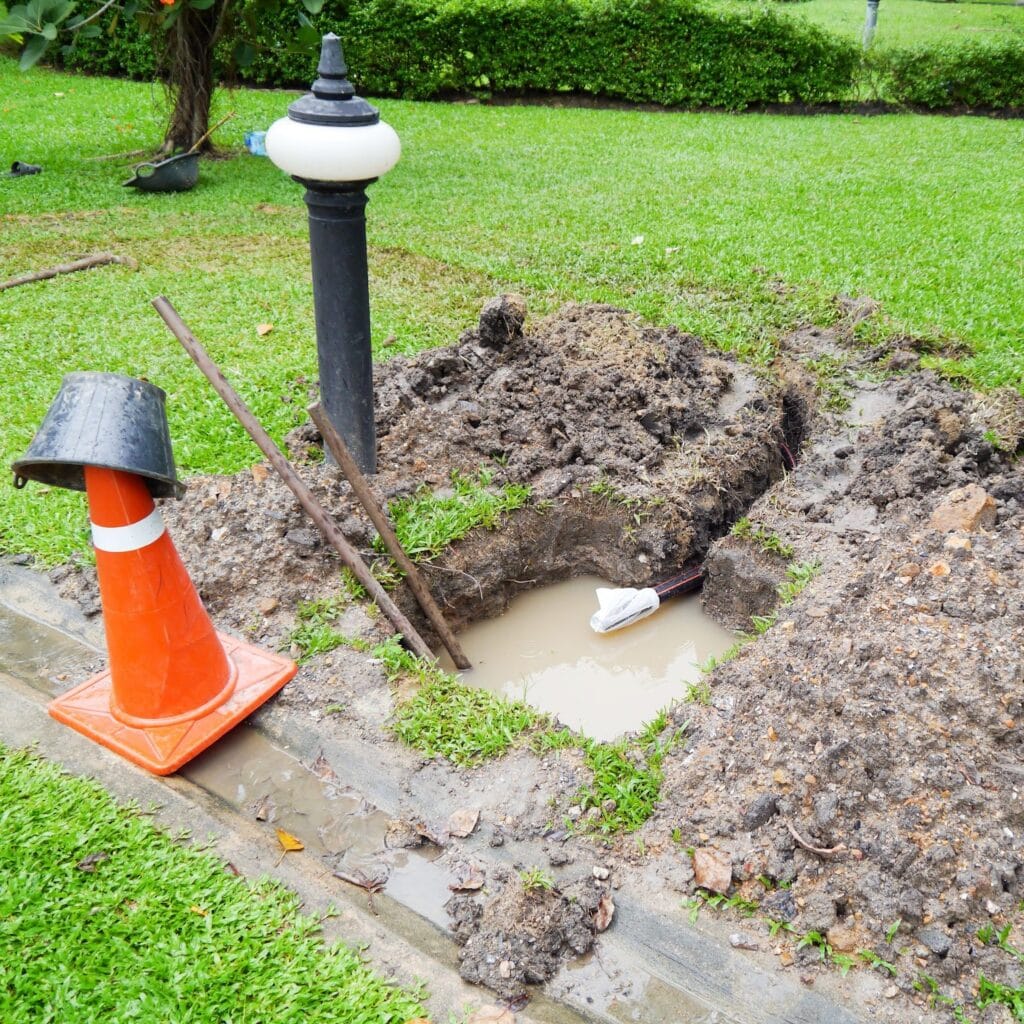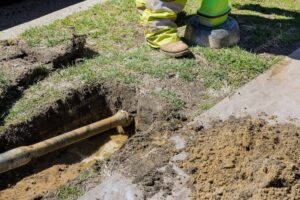Trenchless sewer repair is known by many names: pipe bursting, pipe jacking, or even pipe relining. But whatever you call it, it’s a method of repairing pipes without having to dig a trench.
Outline:
- 1. What is trenchless sewer repair?
- 2. Is a trenchless sewer pipe just as strong as a traditional one?
- 3. How long does it take to complete trenchless sewer repair?
- 4. Is trenchless sewer repair better for the environment?
- 5. What are the signs of a failing pipeline system that needs to be replaced?
- 6. What is cured in place pipe (CIPP)?
- 7. What is pipe bursting?
- Trenchless Sewer Repair in Waco, Texas
1. What is trenchless sewer repair?
The concept behind trenchless sewer repair is simple: instead of digging up the old pipe and replacing it with a new one, the old pipe is fixed, usually from the inside, and then put back into service.
This method can be used in a wide variety of situations and applications, including residential and commercial properties as well as municipal infrastructure like sewer systems. It’s also useful for pipes that have been damaged by age or damage from tree roots growing into them over time—a common occurrence where trees are nearby.
A trenchless sewer repair is a great option for homeowners because it allows you to keep your lawn intact, and it can save you money on labor costs since there are no trucks idling in front of your house all day long.
The main benefit of trenchless sewer repair is that it’s less disruptive than traditional methods. Instead of having to dig up your whole yard and expose everything underneath, you can have the damage repaired without anyone noticing anything happened.
2. Is a trenchless sewer pipe just as strong as a traditional one?
The short answer is yes. The structure of a trenchless pipe lining is just as strong as the old one. In fact, the material used to make a new pipe is stronger (and better) than the old sewer pipe that it replaces. For example, newer liners fabricated with a combination of fiberglass were found to be eight times stronger than the minimum criteria for sewer pipes. (Ji, 2020)
What this means is that the new pipe will last a lot longer than the old one, and it won’t have to be replaced again as quickly.
3. How long does it take to complete trenchless sewer repair?
The duration of the repair depends on the extent of the pipe damage. Professional plumbers can usually complete a trenchless sewer repair in about one day, but if there are multiple breaks in the line or it’s a very long distance from the main to your home, it may take longer. For a more accurate estimate, you can also call us at Smelscer Plumbing to check your pipes.
4. Is trenchless sewer repair safe for the environment?
Trenchless sewer repair is safe for the environment. Trenchless sewer repair uses a specialized machine to make sure that it doesn’t disturb any part of the ground that doesn’t need to be disturbed, so there are no negative environmental impacts. This makes it a much better solution than traditional digging, which can cause significant damage to nearby plants and wildlife.
Another benefit is that trenchless pipe repair doesn’t require as much water for cleanup after the job is done because it uses smaller pipes than traditional systems.
5. What are the signs of a failing pipeline system that needs to be replaced?
You should use trenchless sewer repair if:
- Your sewer line has been damaged by a tree root intrusion, which happens when roots from nearby trees grow into cracks in the pipes and cause leaks or blockages.
- Your sewer line has been damaged by an animal intrusion (for example, a raccoon) or another object that has clogged up the pipes.
- There are places where your pipes have corroded over time due to age or environmental factors like acid rain or saltwater flooding (this can happen near coastlines).
6. What is cured in place pipe (CIPP)?
Cured-In-Place Pipe (CIPP) is actually one of two types of trenchless sewer repair. CIPP involves installing new piping inside the old one using a special polymer that hardens when it comes into contact with water. The new pipe is then pushed into place using hydraulic pressure, which helps to push out any debris in the existing pipe as well as create room for the new section of pipe—all without having to dig up your entire yard!
7. What is pipe bursting?
The other type of trenchless sewer repair is called Pipe Bursting. Pipe bursting uses pressurized water to push out old sections of piping and make room for new ones. The process involves inserting an expandable sleeve over the existing pipe and filling that sleeve with pressurized water until it expands enough to burst through the old section of pipe and create room for placing a new section in its place.

Trenchless Sewer Repair in Waco, Texas
When you’re looking for a professional plumber in Waco, Texas, call Smelscer Plumber. We offer fast, friendly service at affordable prices—and we’re here to help you with all your plumbing needs! We offer the best plumbing services around, including slab leak repair, water heater repair, and more.
We have been providing plumbing services in Waco for several years, and we specialize in residential and commercial work. We also offer emergency plumbing service 24 hours a day, seven days a week, so that you can get help when you need it most.
Why choose us? We are a licensed and insured professional plumber that specializes in trenchless sewer repair. Our team is trained to provide you with the best service possible, so you can rest assured knowing that your needs will be met. Call us at +1 254-749-7955 today!
Reference:
[1] Ji, Hyon Wook, Dan Daehyun Koo, and Jeong-Hee Kang. “Short- and Long-Term Structural Characterization of Cured-in-Place Pipe Liner with Reinforced Glass Fiber Material.” International journal of environmental research and public health. U.S. National Library of Medicine, March 20, 2020. https://www.ncbi.nlm.nih.gov/pmc/articles/PMC7143734/.




